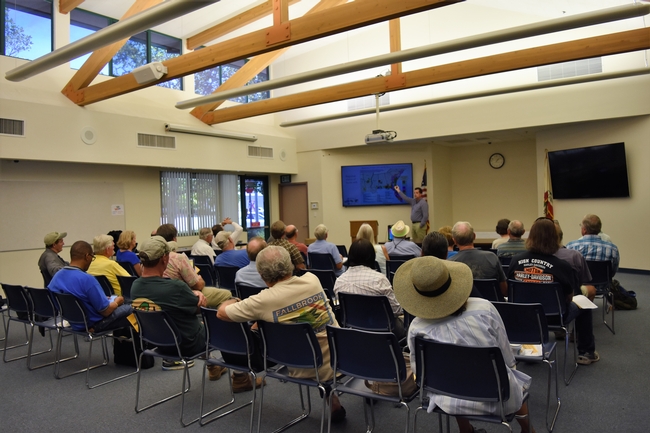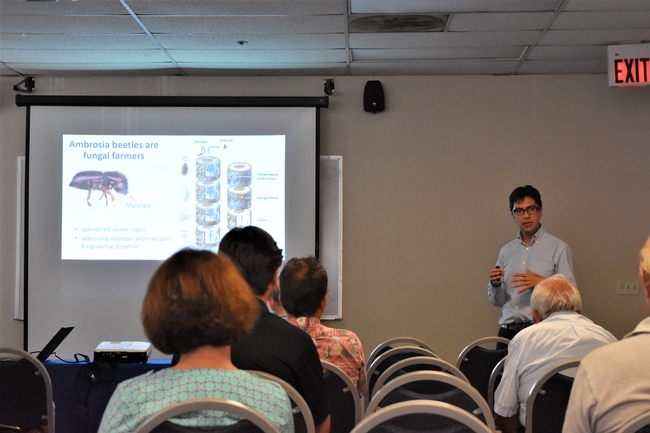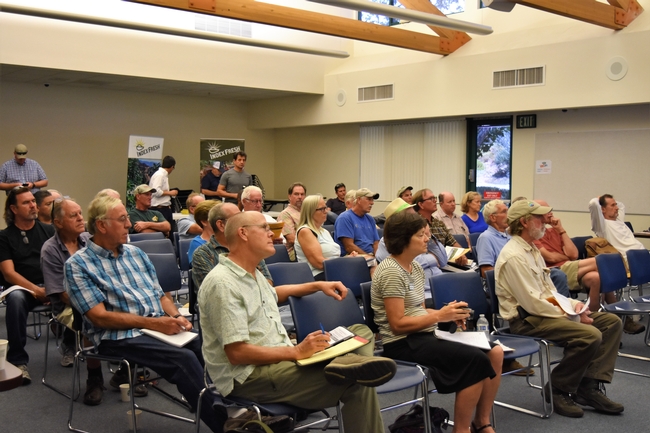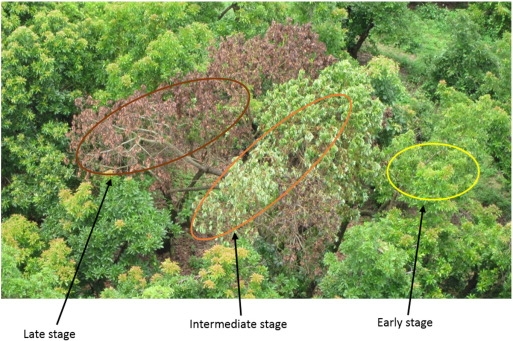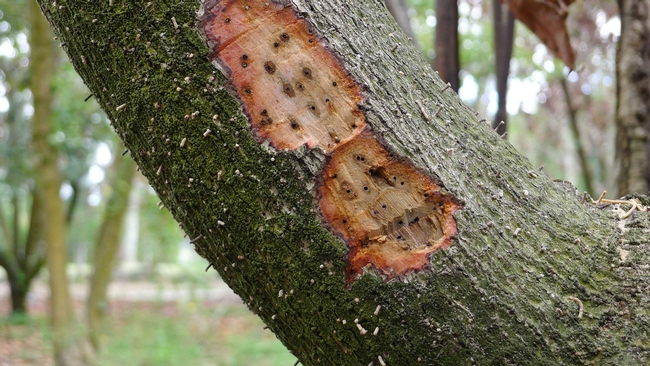During the first week of August, the California Avocado Society, Inc., California Avocado Commission, University of California Cooperative Extension hosted six Laurel wilt researchers from the University of Florida. The speakers were Randy Ploetz, Jonathan Crane, Bruce Schaffer, Daniel Carrillo, Jeff Wasielewski and Edward Evans. In addition to talking at all three seminar locations, San Luis Obispo, Ventura, and Fallbrook, the researchers were also able to tour the major avocado growing regions.
Laurel wilt is a deadly disease of redbay (Persea borbonia) and other tree species in the Laurel family (Lauraceae), which includes the avocado tree. The disease is caused by a fungus (Raffaelea lauricola) that is introduced into host trees by a nonnative insect, the redbay ambrosia beetle (Xyleborus glabratus). Native to Southeast Asia, the ambrosia beetle has similarities to our current ambrosia pest, Polyphagous shot hole borer and the Kuroshio Borer. That is why this visit from our fellow extension researchers from the University of Florida. However the fungus associated with Laurel Wilt is unlike the disease here in California. Laurel Wilt is a disease that that causes a reaction in the tree to restrict water flow in the tree and the tree collapses rapidly. The tree dies so fast that it doesn't even have a chance for the leaves to fall of the dead branches.
The beetle has the ability to spread the specific pathogen to other ambrosia beetle vectors which happens when they feed on infected trees. Sanitation is the most effect way to manage this problem. Scouting for wilted branches and their rapid removal has been the key to early intervention and eradication. Dr. Ploetz suggests removing the tree immediately. By the time you see frass and streaks in the wood, the tree is already infected and has been for sometime. As soon as a growers see the wilt in the branches, its time to move quickly. This disease may be mistaken for Verticillium wilt or Phytophthora. It can spread throughout the grove by root grafting.
The generation time for the beetle inside avocado trees takes about 40-50 days depending upon temperatures. Their flight activity is highest in the late afternoon and early evening. Dr. Carrillo mentioned that ambrosia beetles are notoriously difficult to control because they are inside the tree most of their life cycle versus being outside the tree. Contact herbicides will not work, because the insects are primarily inside the tree. One of the first goals to avoid infection, is to keep your trees healthy. A sick tree is more attractive 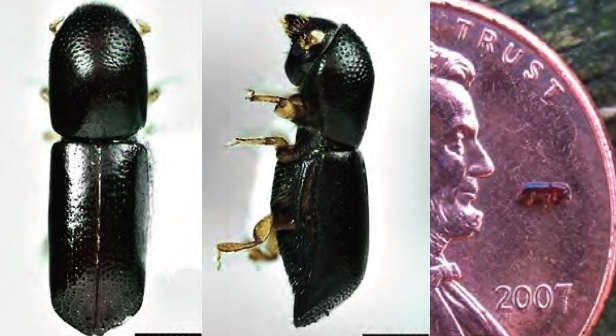
Scouting for laurel wilt in commercial avocado groves
1. Surveying for the symptoms of laurel wilt is a key component of limiting the spread of laurel wilt. Growers and their workers should survey their groves immediately and then weekly or more often if an infestation is detected in an adjacent grove. Pathogen sniffing dogs are currently being used, however there are less than half-dozen trained dogs for this purpose. Symptoms to look for might include:
i. Leaf and young stem wilting.
ii. Leaf color changing from light green to dark green, bluish-green or greenish-brown. Some leaves showing leaf mottling (dark and light green areas) and yellowing.
iii. Dead leaves curled hanging on the tree.
iv. A few stems and limbs with 2 to 4 ft of dieback or whole sections or entire limbs with dieback.
v. Inspection of the trunk and major limbs may show dried sap (white, crystalline powdery material) that indicates insect boring. In any case, on symptomatic limbs remove the bark down to the sapwood and look for dark streaking. Dark streaks in the sapwood may indicate fungal infection. Normally this sapwood should be white to yellowish with no dark staining or streaking. In addition, small, dark holes in the sapwood further indicate wood boring beetles are present.
2. If the tree shows only a few stems and limbs with 2 to 4 ft of dieback, wait for confirmation of laurel wilt before removing the tree. You can remove the dead part of the limb by cutting several feet below the dead area of the limb; burn or bury the infested limb.
